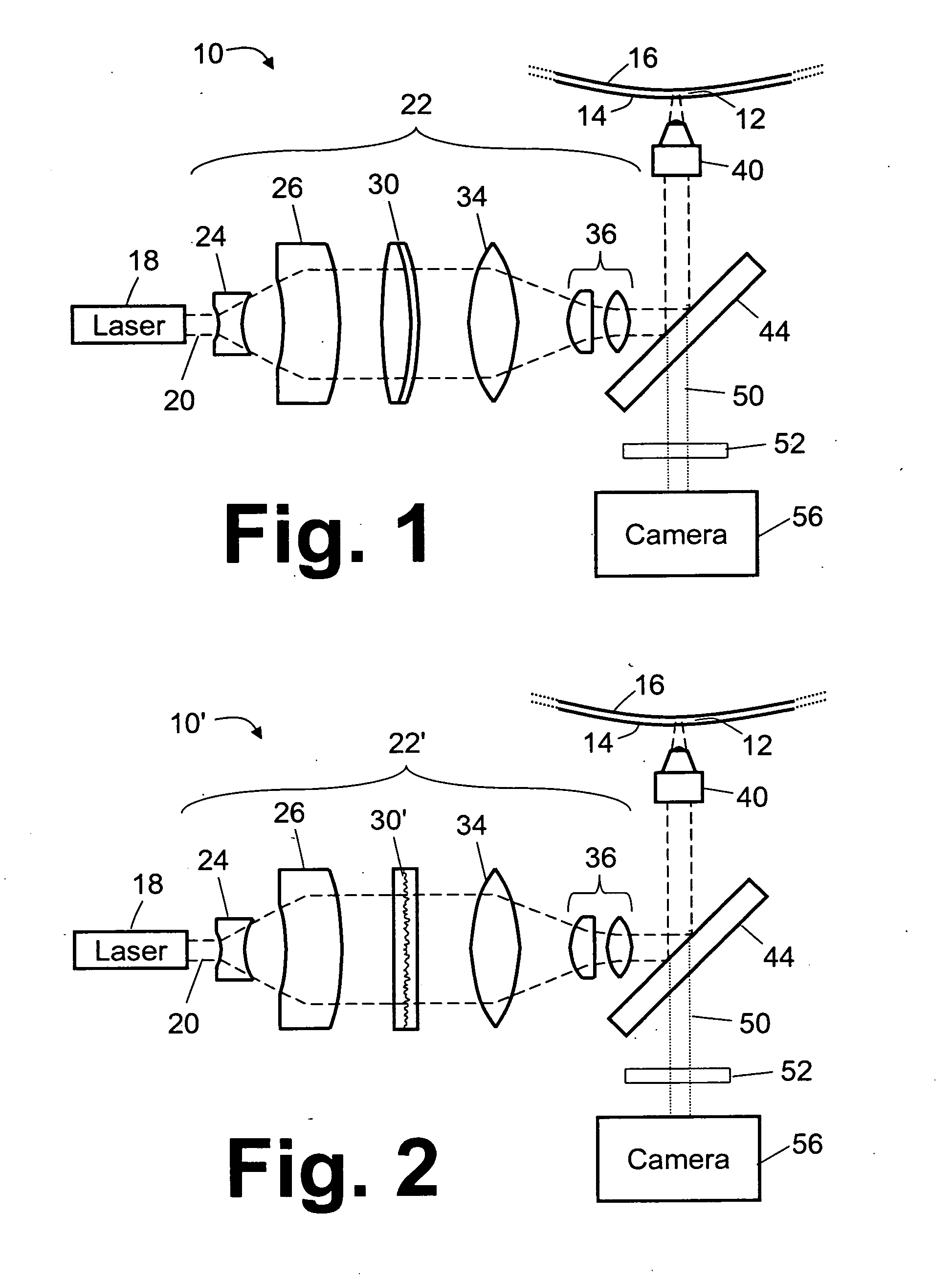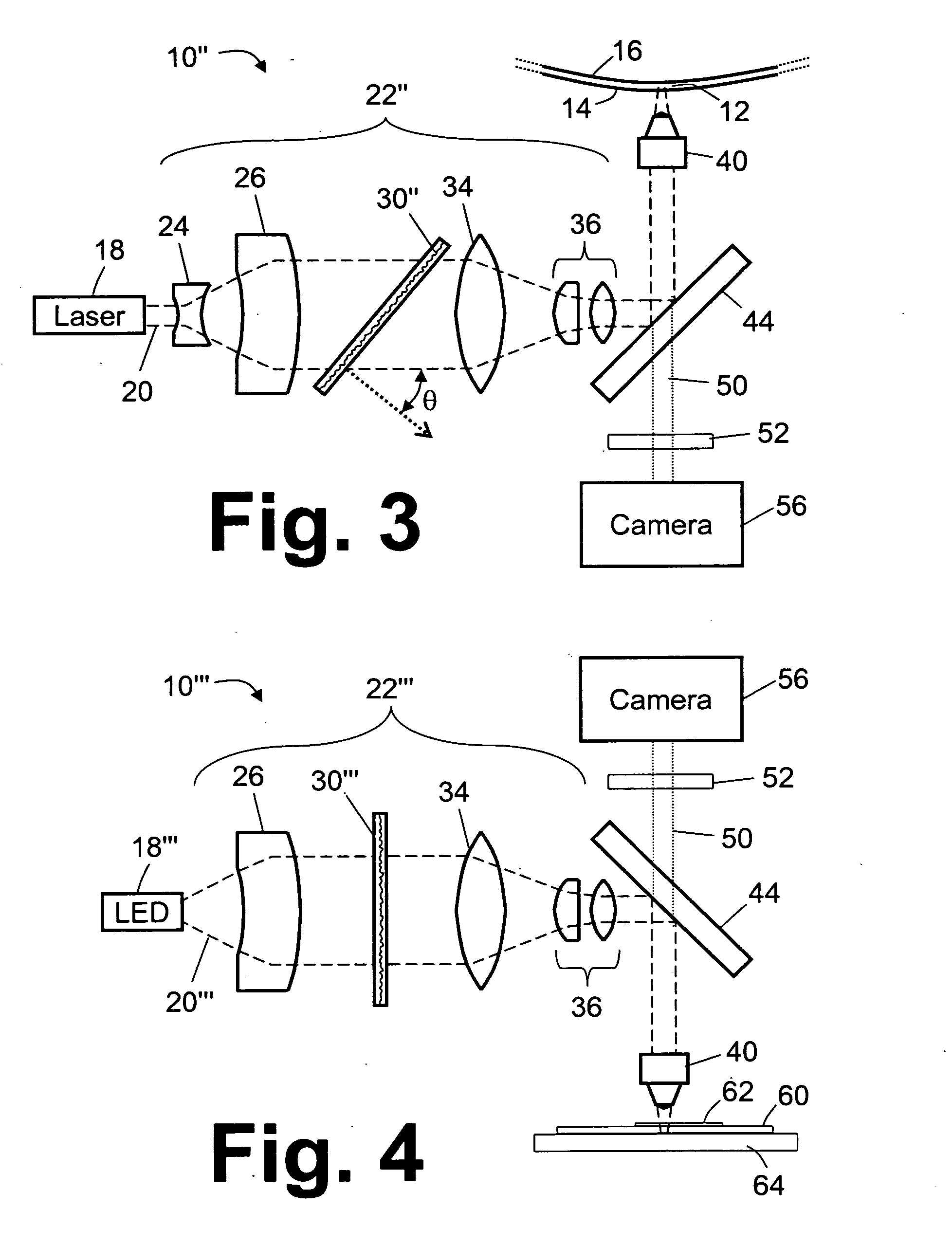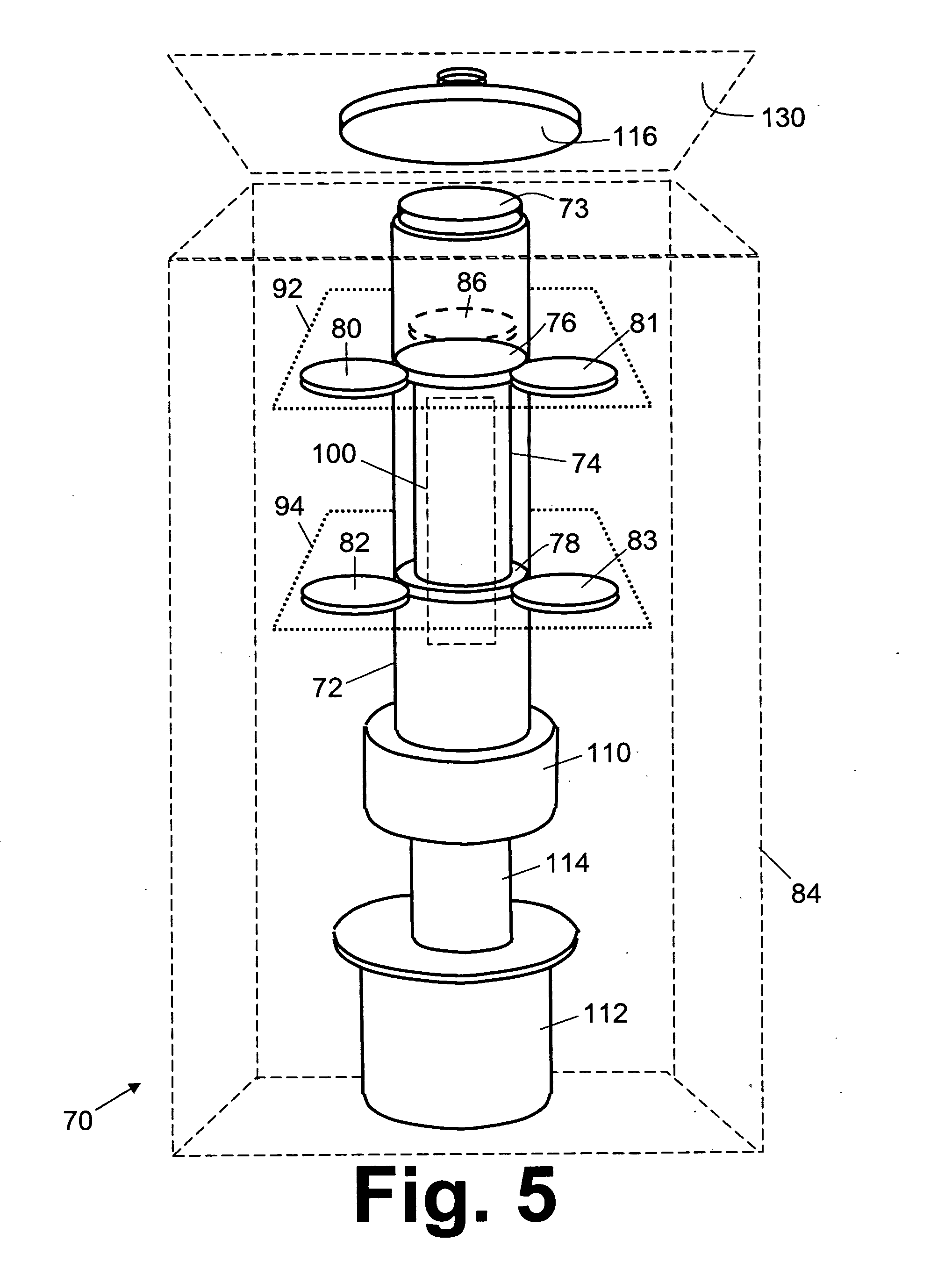Method and apparatus for detection of rare cells
a rare cell and detection method technology, applied in biochemistry apparatus and processes, instruments, optical elements, etc., can solve the problems of difficult fluorescent imager focus and difficulty in locating fluorescent dye-tagged cells in fluorescent images
- Summary
- Abstract
- Description
- Claims
- Application Information
AI Technical Summary
Benefits of technology
Problems solved by technology
Method used
Image
Examples
Embodiment Construction
[0038] With reference to FIG. 1, a microscope system 10 images a microscope field of view coinciding with a buffy coat sample disposed in a generally planar portion of an annular gap 12 between a light-transmissive test tube wall 14 and a float wall 16 of a float disposed in the test tube. Suitable methods and apparatuses for acquiring and preparing such buffy coat samples are disclosed, for example, in U.S. Publ. Appl. No. 2004 / 0067162 A1 and U.S. Publ. Appl. No. 2004 / 0067536 A1.
[0039] The microscope field of view is generally planar in spite of the curvatures of the test tube and the float, because the microscope field of view is typically much smaller in size than the radii of curvature of the test tube wall 14 and the float wall 16. Although the field of view is substantially planar, the buffy coat sample disposed between the light-transmissive test tube wall 14 and the float wall 16 may have a thickness that is substantially greater than the depth of view of the microscope sys...
PUM
 Login to View More
Login to View More Abstract
Description
Claims
Application Information
 Login to View More
Login to View More - R&D
- Intellectual Property
- Life Sciences
- Materials
- Tech Scout
- Unparalleled Data Quality
- Higher Quality Content
- 60% Fewer Hallucinations
Browse by: Latest US Patents, China's latest patents, Technical Efficacy Thesaurus, Application Domain, Technology Topic, Popular Technical Reports.
© 2025 PatSnap. All rights reserved.Legal|Privacy policy|Modern Slavery Act Transparency Statement|Sitemap|About US| Contact US: help@patsnap.com



